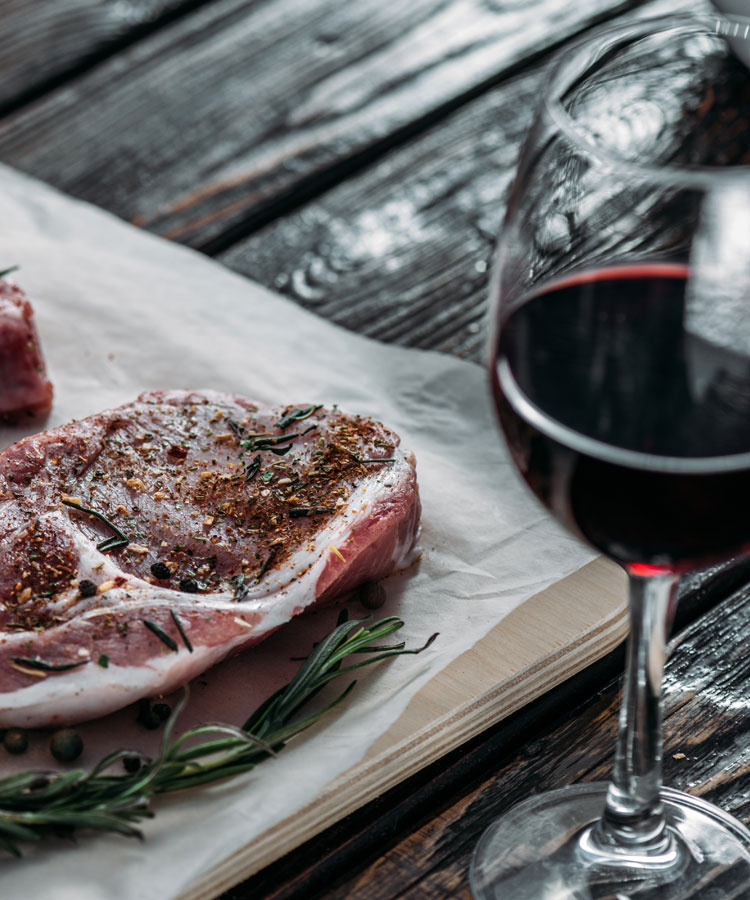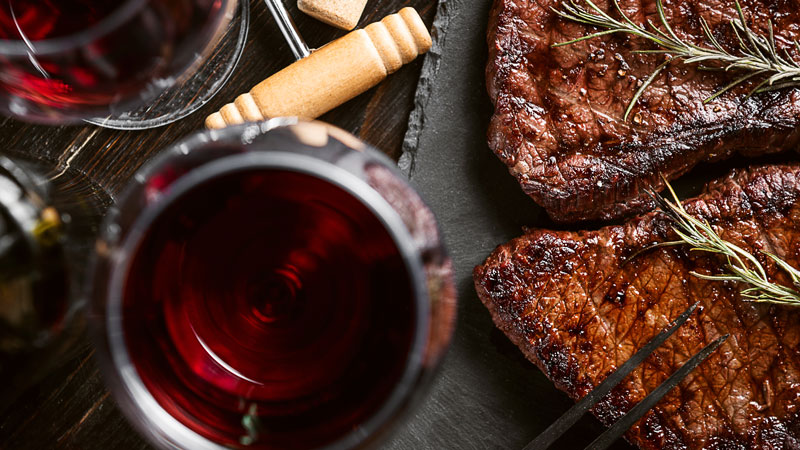
When you think of Chile, you might dream of an asado with a seasoned cook barbecuing meat over a rustic wood-fired grill. Guests are catching up, helping prepare the feast, patiently waiting for the asadero to pass around perfectly charred steaks — and drinking wine, Cabernet Sauvignon, in particular.
“In Chile there’s always Cab at any asado,” confirms Fernanda Tapia, chef and co-owner of Chilean-American restaurant Comedor in Newton Center, Mass. Steak and Cabernet is a classic pairing, but it’s an enduring one with good reason. These days, more and more sommeliers in top restaurants are calling for Chilean Cab when faced with big cuts of meat.
Cabernet Sauvignon now accounts for close to a third of all vineyard plantings in Chile, and the country is now the fifth-largest exporter (and the seventh-largest producer) of wines in the world. The best part: Despite the growing prestige of Chilean Cabernet Sauvignon, you can still get a stellar bottle from producers like Los Vascos, Miguel Torres, Montes, Casa Silva, or Aquitania for less than $20 — which will definitely help offset that dry-aged ribeye.
Sommeliers find intriguing variations in the palate and nose of Chilean Cab depending on where the grapes are grown, a result of Chile’s extremely diverse geography and climate. While Maipo Valley, a.k.a. the “Bordeaux of South America,” is the most famous of Chile’s Cabernet Sauvignon-growing regions, excellent Cab is also found in the valleys of Cachapoal, Colchagua, and Aconcagua.
Here, sommeliers well versed in the art of pairing wine with steaks explain why they’re reaching for Chilean Cabernet Sauvignon:
“You can find a Chilean Cab that brings to the table the power of Napa Valley with the structure of a Cabernet grown in Bordeaux or Tuscany. This best-of-both-worlds scenario allows one to navigate a variety of steak cuts. In Aconcagua, the Cabs tend to lean more towards the red-fruit profile side of Cabernet’s spectrum over the black, with more pronounced acidity and rustic tannins. The Cabernet Sauvignons from this area also have a tendency to highlight the savory aspects of Cab, i.e., dried herbal notes. Moving into the Maipo, you have denser structure and concentration of flavor. The fruit profile gravitates more towards black fruit and the wines tend to showcase a full-bodied punch of flavor combined with spices. Lastly, as you move into Cachapoal and Colchagua, these Cabernet Sauvignons have elements of both Aconcagua and Maipo, full-bodied and dense, but showcasing some more acidity and the savory notes one might find in Bordeaux or Tuscany. – Hai Tran, Sommelier, Barclay Prime (Philadelphia, PA)
“With Chilean Cab, the fruit spectrum lends more toward juicy blue fruits and less of the cherry red that you’ll find in other parts of the world. The tannins are ripe and silky, making the texture softer and highly pleasurable when paired with the right kind of food.” – Ryan Arnold, Private Cellars Manager (Austin, TX)
“Chilean Cabernet has a lot of body; nice acidity, which is particularly important with heavy foods like steak; big tannins, and lots of ripe berry flavors. Some Chilean producers age in American oak, which gives the wine hints of vanilla and tobacco.” – Fernanda Tapia, Chef and Co-owner, Comedor (Newton Centre, MA)
“The quality and depth of flavor of Chilean Cab is continuously improving. Do not discount early vintages. These wines age amazingly.” – Ellen Curtis, GM and Sommelier, CUT (Beverly Hills, CA)
“The high acidity of Chilean Cab is thanks to the cool ocean breezes being pulled inland by the formidable Andes mountains. Acidity is the most important component in wine, because acidity cuts through richness (a.k.a. fat), making it extremely steak- friendly.” – Brad Dixon, Senior Sommelier, Bern’s Steak House (Tampa, FL)
“Chilean Cabernet Sauvignon is more mineral-driven than other growing regions and complements both the flavor of the steak and grilling techniques. In terms of body, Chilean Cabernet isn’t quite as voluptuous as, say, South Australian or Californian Cabernets can be. Chilean Cabs are almost lost between the New and Old World styles. It has a very unique place that’s perhaps more restaurant-applicable than other New World regions featuring the grape.” – Richard Hanauer, Wine and Beverage Director, RPM Restaurants (Chicago, IL)
“Many steak preparations — especially in South American cuisines — are served alongside piquant herbal sauces. Chilean Cabernet acts as a perfect foil as it has a distinctive green quality, typically likened to serrano or bell pepper, which perfectly matches the flavors that are commonly found in these steak preparations.” – Jeremy Shanker, Lead Sommelier, Michael Mina (San Francisco, CA)
This article is sponsored by Wines of Chile. Taste the Unexpected.

